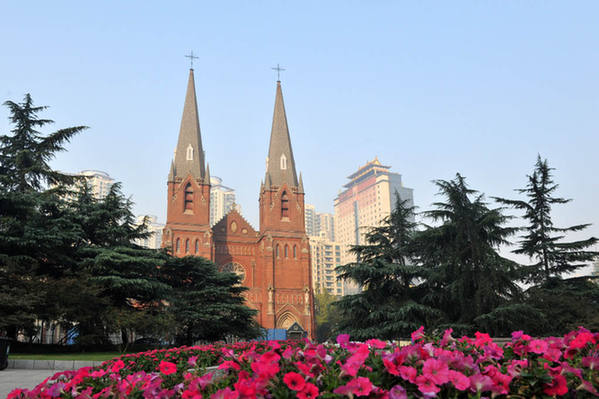The Xujiahui Legacy
By YAO LANLAN
Xujiahui is part of the cultural and historical identity of old Shanghai. Three centuries ago it was a nondescript region covered with paddy fields where two rivers converge. Ming Dynasty scientist Xu Guangqi (1562-1633) conducted experiments and wrote books in his manor here, hence its name Xujiahui – Xujia referring to the Xu family, and hui meaning confluence of waters.
|
 |
|
Xujiahui Cathedral. |
Legacy of a Ming Prime Minister
Xu Guangqi was a legendary figure. His political career was bumpy, yet eventually culminated in the highest position in the Ming imperial court. Furthermore, this dignitary was among the first Chinese Catholics in Shanghai.
In collaboration with the Italian Jesuit missionary Matteo Ricci (1552-1610), Xu translated six volumes of Euclid’s Elements, laying the foundation for modern mathematical sciences in China. He learned from Western astronomy and presided over the writing of The Chongzhen Calendar, which embraced the concept of a spherical Earth. On the basis of extensive fieldwork, as a versatile scientist he also compiled the Complete Treatise on Agriculture (Nongzheng Quanshu), one of ancient China’s four greatest agricultural books.
A park in Xujiahui, now a bustling commercial district, has been renamed after the Ming luminary. With a traditional archway of crane-and-dragon designs and a giant cross standing at two ends of the central divine axis, Guangqi Park is another manifestation of the confluence of the East and West that defines Shanghai.
South Chunhua Mansion is a Ming-era residence relocated from another part of Xujiahui to the park to serve as a memorial hall for Xu Guangqi. A bust of the scientist stands midst the 500-year-old leafy complex. Among the antiques displayed inside the wings, the most valued are the Kunyu Wanguo Quantu (Great Universal Geographic Map), the oldest surviving world map extant in China, and the four watercolor portraits of Xu Guangqi, Matteo Ricci, Flemish Jesuit missionary Ferdinand Verbiest (1623-1688), and German Jesuit Johann Adam Schall von Bell (1591-1666). These portraits were displayed at the 1915 Panama Pacific International Exposition.
